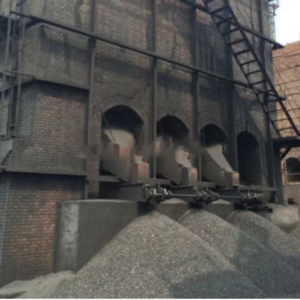導入
Steel, the backbone of modern construction and industry, derives its exceptional strength and durability from its composition. A crucial element in this composition is carbon. When added precisely, carbon transforms iron into steel, offering a versatile material with properties tailored to specific applications. This is where recarburizers step in.
What is a Recarburizer?
A recarburizer is a substance added to molten steel to increase its carbon content. Think of it as the secret ingredient that elevates steel's performance. By carefully introducing carbon, steelmakers can manipulate the material's characteristics, resulting in products ranging from razor-sharp blades to flexible car bodies.
Why is Carbon Important in Steel?
Carbon is the catalyst that transforms iron into steel. It forms strong bonds with iron atoms, creating a robust crystalline structure. The amount of carbon determines the steel's properties. A higher carbon content typically results in harder, stronger steel, while lower carbon levels yield more ductile and malleable steel.
Benefits of Using Recarburizers
Recarburizers offer a multitude of advantages for steel production:
- Improved Hardness: By increasing carbon content, recarburizers enhance steel's resistance to indentation and abrasion.
- Enhanced Wear Resistance: The presence of carbon creates hard carbides that significantly boost the steel's ability to withstand wear and tear.
- Increased Toughness: While often associated with hardness, recarburizers can also improve steel's toughness, enabling it to absorb impact energy without fracturing.
- Better Machinability: Properly adjusted carbon levels enhance steel's machinability, making it easier to cut, drill, and shape.
- Other Potential Benefits: Beyond these core advantages, recarburizers can contribute to reduced porosity, improved weldability, and enhanced fatigue resistance.
How Recarburizers Work
The process of adding carbon to molten steel involves a complex interplay of chemistry and metallurgy. Recarburizers, in various forms, are introduced into the steelmaking process. The carbon from the recarburizer dissolves into the molten metal, increasing its overall carbon content.
How to Choose the Right Recarburizer
Selecting the appropriate recarburizer is crucial for achieving desired steel properties. Several factors influence this choice:
- Purity: High-purity recarburizers ensure precise carbon addition without introducing impurities that could degrade steel quality.
- 粒子サイズ: The size of recarburizer particles affects how quickly carbon dissolves into the molten steel. Smaller particles generally offer faster reaction times.
- Reactivity: The speed at which a recarburizer releases carbon into the steel is essential for efficient carbon addition.
- Cost: Balancing performance with cost is a critical consideration. While high-quality recarburizers might be more expensive, they can often lead to superior steel products.
Avoiding common pitfalls is equally important:
- Over-carburization: Adding too much carbon can result in brittle steel.
- Under-carburization: Insufficient carbon can compromise steel's desired properties.
- Incorrect Recarburizer Selection: Choosing the wrong type of recarburizer can negatively impact steel quality.
Top 5 Recarburizers
Several types of recarburizers are commonly used in the steel industry:
シリコンカーバイド
Renowned for its high purity and fast reaction rate, silicon carbide is a popular choice for demanding steel applications.
黒鉛
With its high carbon content, graphite is effective for increasing carbon levels in steel. However, its reactivity can be slower compared to other options.
Coke
A more cost-effective option, coke is widely used in the steel industry. However, its carbon content and purity can vary.
Carbon Powder
Offering fine particles for precise carbon control, carbon powder is suitable for applications requiring exact carbon adjustments.
Other Recarburizers
Beyond these primary types, ferroalloys and even natural gas can be employed as recarburizers under specific conditions.
ケーススタディ
Real-world examples highlight the impact of recarburizers on steel performance. In the automotive industry, carefully selected recarburizers contribute to the production of high-strength, lightweight steels for improved fuel efficiency. Similarly, in construction, recarburizers enhance the durability and longevity of steel structures.
結論
Recarburizers are indispensable tools in the steelmaker's arsenal. By understanding their role, properties, and selection criteria, you can optimize steel production and create materials that excel in various applications. Remember, choosing the right recarburizer is crucial for achieving the desired steel performance. If you're unsure about the best option for your specific needs, consulting with a metallurgy expert can provide valuable guidance.


